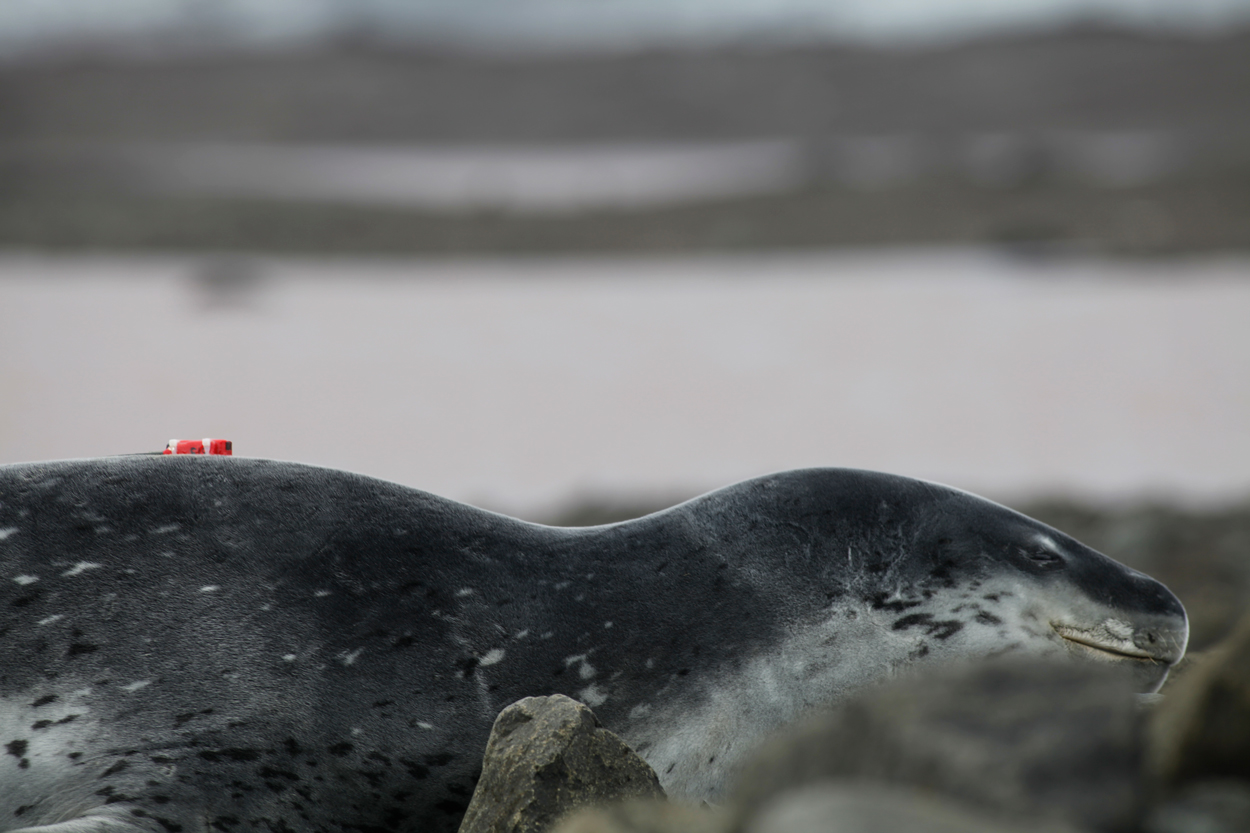From the Field: Innovative Animal-borne Video and Sampling Show Antarctic Leopard Seals as Adaptable Apex Predators
August 3, 2020
By Doug Krause and Mario Aguilera
If you’ve ever seen a leopard seal in a film or documentary, chances are it was viciously tearing apart a penguin. Such images are captivating, but this portrayal is incomplete and, more importantly, inaccurate. Leopard seals are complex apex predators that shape their ecosystems in critical ways. Although poorly studied in the past, a recent collaborative study published by NOAA Fisheries and UC San Diego researchers in BMC Ecology has shed some light on the impact these large predators are having in the Antarctic.
Using innovative animal-borne video, biochemistry sampling techniques and analysis of diet items left behind in seal feces, these scientists revealed that during Antarctic winter-spring, males and females eat similar things including krill, fish and some penguin. However, during summer, likely driven by the energetic demands of motherhood, large female leopard seals change their diet rapidly, incorporating bigger prey, including Antarctic fur seal pups.
“It’s all about what these large, adult leopard seal mothers are doing. They rear their young on their own each year, which requires a tremendous amount of energy,” said Douglas Krause, a wildlife biologist with NOAA’s Antarctic Ecosystem Research Division.
Further, communities of leopard seals show unusual flexibility to adjust their diet each month or year depending upon the available prey.

A leopard seal wearing a field camera used by scientists to study predatory habits.
NOAA AERD, Adam Fox
“It’s hard to get decent diet data from these large, fierce, and cryptic marine predators that spend so much time under water. However, the combination of multiple analyses—video, biochemistry and hard prey parts from seal scats—allowed us to better understand what leopard seals eat throughout the year,” said Associate Professor Carolyn Kurle of the Division of Biological Sciences at UC San Diego.
“Documenting the prey types essential to leopard seal survival, especially for those of moms and their pups, is crucial information for those in charge of managing Antarctic species, particularly in the face of the growing krill fishery, ongoing climate change effects and other potential conservation concerns for this and other top predators in Antarctic waters.”
“The Antarctic Peninsula is warming at one of the fastest rates on earth,” added Krause. “Obtaining a detailed account of how such rapid changes affect diet choices at the top of the food web provides much needed context for the changes we’re seeing across that web in other seals, penguins and krill, as well as changes we might anticipate going forward.”
All research was conducted and images were collected in accordance with U.S. Marine Mammal Protection Act (MMPA) Permit #20599.
